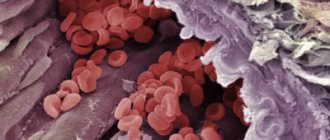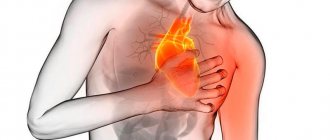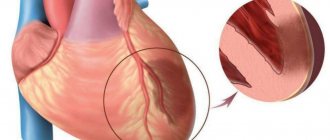Content:
- Doctors' attitude
- Compound
- Indications
- Contraindications
- Overdose
- Other unpleasant consequences
- Development of addiction
Corvalol is one of the most widely known and frequently used drugs. It is especially popular among representatives of the older age group. Sold in tablets and drops. Traditionally used for discomfort in the heart, but in fact it is a sedative and primarily regulates the functioning of the central nervous system. Not as harmless as it might seem. The consequence of long-term use of Corvalol can be the development of unpleasant side effects and even addiction.
Doctors' attitude
Experts assess the need and benefits of the drug differently. Some doctors believe that due to the presence of phenobarbital, which is part of the group of barbiturates, the drug should be included in the prescription list. Uncontrolled use can cause serious side effects, poisoning and addiction. Another argument in favor of this position is that the medicine temporarily relieves symptoms but does not cure anything. Because of this, patients with serious pathologies do not seek medical help on time.
Other doctors indicate that the remedy benefits a large number of people. It relieves pain in mild myocardial ischemia and has a fairly pronounced antiarrhythmic effect. In addition, it has a beneficial effect on the condition of patients with cardioneurosis, a widespread disease in which heart pain is caused by psychological factors. And it is very inexpensive, which is important for older people, who are the main group of consumers.
Psychotherapeutic assistance and selection of an analogue
If addiction to Corvalol has developed against the backdrop of stressful situations, when there was no strength to independently cope with problems and strong emotional experiences, the help of a psychotherapist is needed.
Psychotherapeutic assistance in our clinic is provided in the following forms:
- consultations;
- relaxation activities;
- trainings.
The doctor will help you get rid of internal conflicts and find a way out of difficult life situations that have caused psycho-emotional disorders, for example: depression, insomnia and sleep disorders. If necessary, the psychotherapist will select a safe analogue of the sedative and create a course of taking it.
Indications
The medicine is indicated when functional disorders occur and is ineffective when there are pronounced organic changes. It can be taken for anxiety, a slight jump in blood pressure, agitation, irritability, vegetative disorders (weakness, redness of the skin, excessive sweating).
The drug can be used occasionally to facilitate falling asleep, but sleep is not entirely physiological, so regular use for this purpose is undesirable. The medication helps relieve intestinal spasms, but this effect is insignificant.
Overdose
The following complications can result from consuming Corvalol in large quantities:
- Reduced blood pressure. Along with dizziness, weakness and fainting, renal filtration may slow down against this background, which can lead to the development of oliguria. The likelihood of this negative consequence increases with kidney disease and initial hypotension.
- Slow reaction and deterioration of coordination of movements. It is especially dangerous for people operating moving machinery. May cause traffic accidents and industrial accidents. In the elderly, it increases the likelihood of falls and, as a result, fractures due to osteoporosis.
Long-term use causes a feeling of constant fatigue, trembling limbs, the appearance of depressive moods, deterioration of memory and the ability to concentrate. Due to addiction, patients gradually increase the dose. The drug has a cumulative effect, that is, it accumulates in the body, so symptoms of poisoning with regular use can occur even after the next dose of the usual dose.
There is no indication in the official instructions that the simultaneous consumption of alcohol is prohibited. However, statistics confirm the presence of unwanted reactions and dangerous complications due to the combined use of Corvalol and alcoholic beverages. Cases of coma and death have been described.
Is an affair with Corvalol dangerous?
There are a lot of medicines that have been in pharmacies and home medicine cabinets for decades. We have known all about them since childhood and are not at all afraid of them. They are quiet, familiar and always at hand, like your favorite slippers: I used them and immediately felt light and calm.
But no matter what we are dealing with, no matter how harmless and familiar it may seem to us, we should always handle objects with caution. Even thanks to slippers, no matter how cozy and warm they are, you can fall and slip on a wet floor. And what about medications! Moreover, they may not be such friendly inhabitants of our home.
For example, the widely known and dear “Corvalol”, which can show its needles to those who treat it too carelessly.
Unclear diagnosis
I want to tell you a story. One day, a young woman, 27 years old, was admitted to the neurology department. According to her mother, she found her lying in the hallway of her apartment. The daughter's speech was incomprehensible and incoherent. The woman staggered and could hardly stand on her feet. The arriving ambulance team did not decide on the diagnosis and took the woman to the hospital, where she was hospitalized with a suspected ruptured brain aneurysm.
A computed tomography (CT) scan did not reveal any problems in the brain. And in the morning the girl became cheerful and cheerful. All her balance and speech problems disappeared. Relatives and doctors exhaled: “Well, thank God.” We decided to wait another week, conduct additional research and discharge the lady. However, the very next day the patient was found lying on the floor in her room, in the same condition as when she was hospitalized. Again fuss and research, again CT scan, and again after 2 days the woman is as fresh as a cucumber.
This went on several times. The doctors were perplexed, the relatives were angry... until someone discovered a bag of empty Corvalol bottles in the patient’s nightstand. The patient admitted that she took all of this “Corvalol” orally during her stay in the hospital.
Why didn't anyone guess?
Yes, no one guessed right away, even despite the persistent smell of Corvalol in the room. Why didn't the doctors guess? The saga with the abuse of Corvalol was just beginning. This medicine was on the market a long time ago, but all the intricacies of drug addiction were mainly known to narcologists. And narcologists are people who also tell few people their professional secrets, because there are always people who will accept this information as a guide to action.
Previously, people in Russia had a rather rigid attitude that medicine is medicine, and it should be taken as it should be. It was only during perestroika that the opinion began to spread widely that “doctors don’t know anything, you have to get treatment yourself.”
And a considerable part of cases of self-medication is expressed in the fact that patients change the doses of their medications according to their own ideas about the safety and danger of the drug. "Corvalol" has always been considered "harmless". Many people thought that if they dripped a little of it into a glass, there would be no harm. Who will be harmed by some 10–20 extra drops? And for this reason, cases of abuse began to appear more and more often.
Narcotic bottle
So is Corvalol dangerous? The perception of Corvalol as a faithful friend standing by in the face of life's ups and downs played a bad joke with this drug. Now they want to present it everywhere as 50 ml of evil in a dark bottle, but it is really good when used correctly.
That is, in recommended doses. When it was added to the list of narcotic substances in 2013, many people were extremely unhappy with it.
Everyone knew that there was phenobarbital, which has long been a “registered drug” (that is, issued by prescription and its consumption is strictly controlled in hospitals). But for people it was a convenient drug to “calm the nerves” that helped. And the ban on free sale was perceived by them as the government’s malice. After all, how much phenobarbital is in that Corvalol? The cat cried. As a result, Corvalol is still sold in Russia without a prescription, but the problem with the possibility of developing dependence on it still remains.
Let's figure out how it turns out that people become dependent on the drug. It's really low in phenobarbital. Only 7.5 mg per 20 drops. This is 6.7 times less than in one tablet of phenobarbital. Those. even if you drink Corvalol 3 times a day, 15–20 drops, as recommended, no harm will happen. And many people can actually drink Corvalol at this dose for years without fear of physical dependence.
Heartfelt care
However, it should be noted that psychological dependence on the drug may occur. “Corvalol” can become a symbol of the depth of mental suffering in some people prone to demonstrative behavior. If someone starts drinking "heart drops", it means that he is very upset and shows this to others. In other cases, especially in the elderly, Corvalol is simply part of the daily routine. The man got up in the morning, took his morning pills and dropped some drops “for nerves” just in case. Naturally, if Corvalol suddenly disappears from reach, this causes some panic, because something in life begins to be seriously lacking.
Tenacious paws "Corvalola"
But real addiction is characterized not so much by the regularity of administration, but by the size of the dose and its gradual increase from day to day. If you start taking 1 bottle of Corvalol per day, the dose will be more than 3 tablets of phenobarbital. Accordingly, if you drink a bottle 3 times a day, you will get a much larger dose. And if the dose of phenobarbital is increased by 3–4 times, dependence on the substance develops in 75% of people.
In addition, in the case of Corvalol, everything is even more complicated. 96% of the drug is ethyl alcohol. And alcohol and phenobarbital enhance each other’s effects, and therefore addiction develops much faster, without reaching high doses.
But addiction is one side of the coin of Corvalol abuse. Both phenobarbital and alcohol cause damage to the nervous system. In this case, they strike the brain together, causing damage.
How can this happen?
Why do people start abusing the drug? Basically, a person falls into the Corvalol network by accident. Those. he has no specific desire to put himself in a state of intoxication. Such people have various mental and psychological problems, such as depression or chronic anxiety. In these cases, Corvalol does not provide any significant and lasting improvement in the condition. At first, the symptoms seem to subside, and then everything starts again. People begin to gradually add a dose, wanting to calm down, but peace does not come.
How to avoid getting addicted?
1. Do not exceed recommended doses. 2. Do not mix Corvalol with alcohol and other sedatives. 3. If the recommended dose of Corvalol is no longer enough, you should consult a doctor to prescribe other sedatives. 4. If your daily dose is higher than the recommended dose, reduce your dose gradually.
After this, it is advisable to completely abandon Corvalol. It is unlikely to have any effect.
Natalia Stilson
Photo thinkstockphotos.com
Other Adverse Effects
Self-medication when refusing examination and qualified medical care can lead to delayed diagnosis of serious diseases, worsening the prognosis and increasing the likelihood of developing serious complications: hypertensive crises, strokes, heart attacks.
Some patients, even with a diagnosis and prescribed treatment, continue to prefer Corvalol, as a well-known and fast-acting remedy. However, unlike antiplatelet agents, antihypertensive drugs or statins, the drug does not affect the mechanisms of development of disorders in any way - it only masks existing symptoms.
Don't forget about habit and the placebo effect. With constant use, the next dose in itself becomes a calming ritual and looks like taking care of your health. The apparent effectiveness of treatment may be due to psychological factors, and not at all to the effect of the drug. It turns out that a person is in vain poisoning his body with barbiturates, but does not receive the necessary treatment.
Literature:
- Adverse reactions when using valerian and corvalol preparations: analysis of spontaneous reports / Morokhina S.L., Alyautdin R.N., Kaperko D.A., Shubnikova E.V., Snegireva I.I., et al. / 2021 / Safety and the risk of pharmacotherapy.
- Reducing anxiety without deteriorating cognitive functions / Reshetova T. V., Zhigalova T. N., Gazieva A. A. / 2013 / Remedium. Magazine about the Russian drug market and medical equipment.
- Adverse drug reactions = Adverse drug reactions. General information / [Reichart D.V. et al.] ; edited by D. W. Reichart. - Moscow: Litterra, 2007. - 248 p.
Development of addiction
Uncontrolled use of the drug leads to addiction, not only psychological, but also physical. The person becomes distracted and suffers from deterioration of memory and attention. Movement disorders are possible, especially in old age.
If you stop taking it abruptly, withdrawal syndrome develops. A person is worried about increasing weakness, constant anxiety, nausea, vomiting, dizziness, and tremors of the limbs. Fainting is possible. In severe cases, seizures occur, and some patients experience delirium.
Special reactions to the components of the drug
The following negative reactions were observed in patients taking Corvalol:
- nausea;
- vomit;
- constipation;
- feeling of heaviness in the stomach;
- increased weakness;
- dizziness;
- hallucinations;
- headaches in the frontal lobe;
- anemia;
- thrombocytopenia;
- difficulty breathing.







